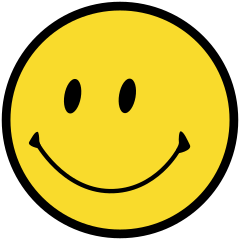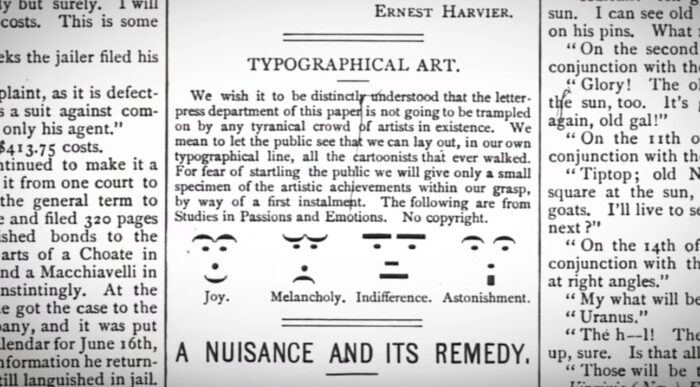
Who remembers the original “smiley” or “happy” face? Before anyone thought of emojis, Harvey Ross Ball, a graphic designer, was asked to make an icon that could lift employee morale. Within 10 minutes Ball came up with a yellow circle, two black dots for eyes, and an arc for a mouth. Ball was paid $45 for his work. You might think that’s good pay for 10 minutes of doodling in 1963. In 2019 that $45 became $376.
Within months, those smiley faces were everywhere – on buttons, note pads, and stickers. They were such a constant image of happiness, they became downright irritating. I had a supervisor once who gave out smiley faces instead of actual verbal encouragement.
Anyway, in 1972 a Frenchman named Franklin Loufrani launched a similar image, trademarked the design, and founded The Smiley Company which became a multinational corporation. In 1997 Loufrani wanted to register the trademark face in the U. S., and ran into a conflict with the WalMart Happy Face on Roll Back Prices signs and employee vests. In 2002 the issue went to court, and was settled eight years later.
Enter the Emoticon

The next ubiquitous Happy Face was an emoticon, a sideways picture derived from a colon, dash, and closed parentheses mark that began appearing with the rise of email.
Emoticons weren’t the first punctuation mark faces. In 1881 Puck Magazine published four faces and called them typographical art: Joy, Melancholy, Indifference, and Astonishment. All the expressions were made from type, and all of them lacked emotion.

Triumph of the Emojis
As we moved into the digital age, we continued to use typeface emoticons and actual words. But something was lacking. In 1999, Japanese artist Shigetaka Kurita was on the development team for the mobile internet platform of Japan’s main mobile carrier. He envisioned an illustrative interface that could convey information in a simple way. For example, instead of writing out partly sunny with some rain, show a picture.🌦
Kurita developed 176 emoji emphasizing symbols. The weather might call for sun 🌞or clouds ☁️ or remind you to take an umbrella ☔️. Or it might add warmth to a message with a heart ❤️.
In 2009 developers submitted an official proposal to the Unicode Consortium to include 625 new emoji characters into the Unicode Standard. It’s a lengthy process, but by 2014 the Great Emoji Politicization had begun. Food emoji represented foods from different cultures, for example, a taco 🌮, or a bento box 🍱. In 2015, it became possible to change skin tones on people emojis.

In 2012 Apple iOS 6 gave iPhone owners an emoji keyboard. The term emoji entered the Oxford English Dictionary the following year. And in 2015 the Oxford Dictionary named the emoji “face with tears of joy” 😂 Word of the Year as the word best reflecting the ethos, mood, and pre-occupations of the 2015. Emojis were part of our daily language.
I, personally, haven’t progressed much beyond the Smiley Face 😀 and I still “spell” out “LOL” instead of using the symbol 🤣 which technically translates as “rolling on the floor laughing face.” Nevertheless, I like emoji. They’re fun, expressive, and often efficient.
New emojis come out all the time. Here are the 117 Emojis for 2020.
😷😷😷
Illustrations
Smiley face by en:User:Mystic
Emoji face with tears of joy by Twitter
“Oxford Dictionaries 2015 World of the Year is an Emoji.” PBS. Nov. 17, 2015.
“The Wired Guide to Emoji.” Wired. Feb. 1, 2018.

Sandra Wagner-Wright holds the doctoral degree in history and taught women’s and global history at the University of Hawai`i. Sandra travels for her research, most recently to Salem, Massachusetts, the setting of her new Salem Stories series. She also enjoys traveling for new experiences. Recent trips include Antarctica and a river cruise on the Rhine from Amsterdam to Basel.
Sandra particularly likes writing about strong women who make a difference. She lives in Hilo, Hawai`i with her family and writes a blog relating to history, travel, and the idiosyncrasies of life.

